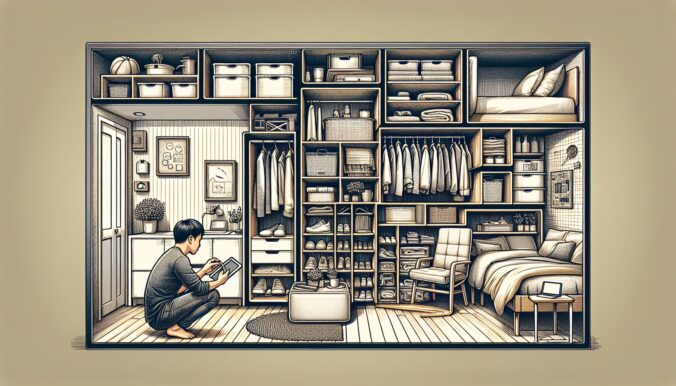As more people are living in smaller spaces, whether it be due to financial reasons or a desire to simplify their lives, the challenge of efficiently utilizing every inch of space has become increasingly important. However, just because you have a small space doesn’t mean you have to sacrifice style or functionality. With a few clever interior design tips and strategies, you can make the most of your space and create a home that is both practical and aesthetically pleasing. In this blog post, we will explore some practical and friendly advice for maximizing small spaces in your home.
Creating the Illusion of Space
One of the first things to consider when working with a small space is how to create the illusion of more space. There are several design tricks you can use to make a room feel larger than it actually is. The first step is to choose light, neutral colors for your walls and furniture. Light colors reflect natural light and can make a room feel more open and airy. Additionally, using a monochromatic color scheme can help create a sense of continuity and cohesion in a small space.
Another way to create the illusion of space is to use mirrors strategically. Placing mirrors on walls opposite windows can help reflect natural light and make a room feel brighter and more spacious. You can also try using mirrored furniture or decor to add depth and visual interest to a small room. Additionally, using glass or lucite furniture can create a sense of openness and transparency in a small space.
Multifunctional Furniture
When dealing with limited space, it’s important to choose furniture that is both stylish and functional. Multifunctional furniture is your best friend when it comes to maximizing space in a small room. Look for pieces that serve more than one purpose, such as a sofa bed, a coffee table with storage, or a dining table that can be folded or extended when needed.
Another great way to save space is to choose furniture with built-in storage. Opt for beds with drawers underneath, ottomans that double as storage bins, or shelving units that can also serve as room dividers. By incorporating furniture with hidden storage solutions, you can keep your space organized and clutter-free.
Utilizing Vertical Space
In a small room, every inch of space counts, including vertical space. To make the most of your walls, consider installing floating shelves or wall-mounted cabinets. These can provide additional storage without taking up valuable floor space. You can use floating shelves to display books, plants, or decorative items, adding personality and style to your space.
Another way to utilize vertical space is to hang curtains or drapes as close to the ceiling as possible. This draws the eye upward and creates the illusion of higher ceilings, making a room feel more spacious. Additionally, using tall bookcases or floor-to-ceiling storage units can help maximize storage space while also adding visual interest to a small room.
Optimizing Layout and Traffic Flow
When arranging furniture in a small space, it’s important to consider the layout and traffic flow. Avoid blocking pathways or creating obstacles that hinder movement around the room. Instead, try to create a clear and open flow that allows for easy navigation.
One way to optimize layout is to create different zones within a small room. Define separate areas for sleeping, working, and relaxing by using rugs, furniture placement, or room dividers. This can help create a sense of structure and organization in a small space, making it feel more purposeful and cohesive.
Personalizing Your Space
Finally, don’t forget to personalize your small space to make it feel like home. Incorporate elements that reflect your personality and style, such as artwork, photos, or meaningful objects. Adding personal touches to your space can help create a sense of comfort and belonging, making it a place where you love to spend time.
By following these practical interior tips and strategies, you can make the most of your small space and create a home that is both functional and stylish. Remember, the key to maximizing a small space is to think creatively, prioritize functionality, and make every inch count. With a little creativity and planning, you can turn even the smallest of spaces into a cozy and inviting retreat.
